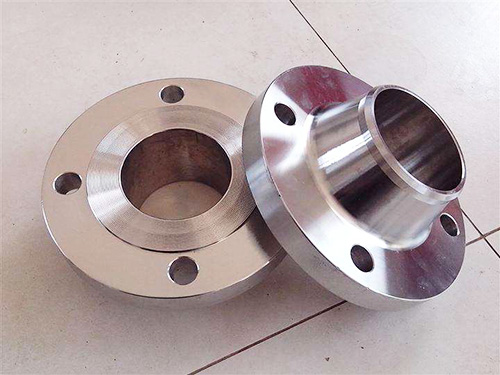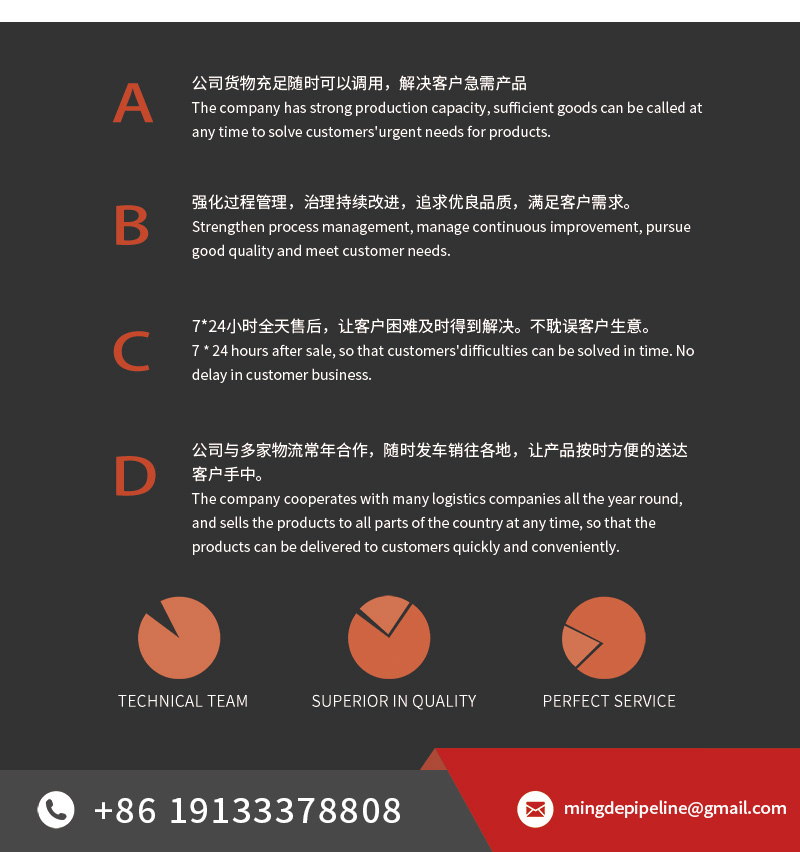
WELDING NECK FLANGE

Welding neck flanges, also known as WN flanges, are one of the most important and commonly used types of flanges in high-pressure and high-temperature piping systems. They are specifically designed to offer exceptional mechanical strength, fatigue resistance, and stress distribution, making them a preferred choice in critical industrial applications where safety, reliability, and durability are top priorities.
Structural Features
The defining feature of a welding neck flange is its long tapered hub, which gradually transitions from the thickness of the flange ring to the thickness of the pipe wall. This tapered hub is welded directly to the pipe using a butt weld (also known as a full penetration weld), creating a strong and seamless connection that minimizes stress concentrations at the joint. This welding method allows the flange and pipe to act as a continuous unit, capable of withstanding high levels of mechanical strain.
The flange face, which serves as the sealing surface, is typically available in several configurations such as raised face (RF), flat face (FF), and ring-type joint (RTJ), depending on the specific sealing requirements of the system. The smooth and precisely machined surface of the flange ensures reliable sealing performance when paired with the appropriate gasket and bolting arrangement.
Material Versatility
Welding neck flanges can be manufactured from a wide range of materials, including carbon steel, stainless steel, alloy steel, and duplex or super duplex steel. The material is usually selected based on the operating conditions such as temperature, pressure, corrosion exposure, and compatibility with the conveyed media. This material versatility allows welding neck flanges to be used in both general-purpose and highly specialized applications.
Applications Across Industries
Due to their outstanding structural integrity and ability to perform under extreme conditions, welding neck flanges are widely utilized in various industrial sectors:
Oil and Gas: In upstream, midstream, and downstream segments, welding neck flanges are used in pipeline systems, pressure vessels, and process equipment to ensure safe and stable flow of crude oil, natural gas, and refined products.
Petrochemical and Chemical Processing: These flanges are essential in environments where corrosive chemicals and high temperatures are present. They help maintain the integrity of pipelines and reactors.
Power Generation: In thermal, nuclear, and renewable energy plants, welding neck flanges are used in steam lines, boilers, heat exchangers, and turbine systems.
Shipbuilding and Offshore Engineering: Their reliability under high pressure makes them suitable for marine and offshore applications, including undersea pipelines and platform systems.
Water Treatment and Distribution: For high-pressure water supply, filtration systems, and desalination plants, welding neck flanges provide safe and long-lasting connections.
Pharmaceutical and Food Processing: In hygienic-grade versions, these flanges ensure sterile and smooth flow of sensitive liquids, supporting strict sanitary standards.
Advantages of Welding Neck Flanges
Exceptional Strength and Durability
Welding neck flanges offer a robust connection between the pipe and the flange, capable of handling high pressure and temperature fluctuations without compromising structural integrity. The butt weld ensures uniform stress distribution, reducing the risk of cracking, leakage, or fatigue.
Superior Fatigue Resistance
The tapered hub design helps reduce stress concentration at the base of the flange, which is crucial in systems subjected to cyclic loading, thermal expansion, or vibration. This makes the flange particularly suitable for long-term service in dynamic conditions.
Reliable Sealing Performance
When paired with the appropriate gasket and bolting configuration, welding neck flanges provide excellent sealing performance. This is especially critical in applications involving hazardous or volatile substances where even minor leaks can pose serious risks.
Easy Inspection and Maintenance
The weld joint and flange body are accessible for radiographic or ultrasonic inspection, enabling operators to verify weld quality and detect potential flaws. Additionally, flanges can be unbolted and removed for cleaning, replacement, or modification without cutting the pipe.
Compatibility with Piping Standards
Welding neck flanges are designed in accordance with international standards such as ASME, DIN, EN, and JIS, ensuring compatibility with a wide range of piping systems. This standardization also simplifies procurement and inventory management for global projects.
Customizable Design Options
Depending on the application requirements, welding neck flanges can be customized in terms of size, pressure rating, face type, and material grade. This flexibility allows engineers to tailor the flange design to match specific system demands.
Installation and Usage Considerations
While welding neck flanges provide numerous advantages, proper installation is critical to ensure performance. The butt weld must be executed by skilled welders using qualified welding procedures. Post-weld inspection and testing are often required to confirm joint integrity, especially in high-risk applications. Proper alignment of the flange and pipe during welding is essential to prevent angular misalignment, which could lead to uneven stress distribution and premature failure.
In high-pressure or high-temperature environments, it is also important to select suitable gaskets and bolting materials that can withstand the same operating conditions as the flange itself. Regular maintenance and monitoring help extend service life and prevent costly downtime.
Role in System Integrity and Safety
In industrial piping systems, the choice of flange directly influences system integrity and operational safety. Welding neck flanges, due to their strength and fatigue resistance, are often specified in mission-critical areas where failure is not an option. They help ensure continuity of flow, containment of hazardous substances, and overall reliability of the infrastructure.
The long service life of a welding neck flange, combined with its ability to endure severe operating environments, makes it a cost-effective solution over time. Although the initial installation may involve more effort and precision compared to slip-on or threaded flanges, the long-term benefits in terms of reduced maintenance, fewer failures, and improved safety justify the investment.
Environmental and Operational Resilience
In addition to handling high pressure and temperature, welding neck flanges also perform well under various environmental conditions. Whether exposed to offshore salt spray, aggressive chemicals, or abrasive media, the proper choice of flange material and surface treatment can help resist corrosion and wear.
For example, stainless steel welding neck flanges are ideal for environments requiring resistance to oxidation and chemical attack, while alloy steel flanges can be used in high-temperature or high-strength applications. Surface coatings and treatments such as galvanizing, painting, or anti-corrosive layers further enhance the flange's durability.
Conclusion
Welding neck flanges represent the pinnacle of flange engineering, offering unmatched performance in strength, reliability, and long-term service. Their tapered hub and butt-weld design make them the optimal choice for critical piping systems where precision and durability are essential.
By providing secure and leak-proof connections, supporting efficient stress distribution, and enabling seamless integration into complex piping networks, welding neck flanges help industries maintain safety, compliance, and operational excellence.
Whether used in the heart of an oil refinery, deep beneath the ocean on a drilling rig, or within a high-pressure steam turbine, welding neck flanges continue to play a foundational role in modern infrastructure. As industries evolve and demands on piping systems grow, the value of reliable flange connections like the welding neck flange remains more important than ever.

 NEWS
NEWS
-
Thermal Stress Management with Advanced Pipe Insulation Brackets
2025-11-21 07:46:59
-
Custom Pipe Clamp Solutions for Complex Industrial Applications
2025-11-20 06:58:48
-
Modular Pipe Support Systems: Benefits for Modern Facilities Meta Description
2025-11-19 02:23:52
-
Corrosion-Resistant Brackets for Harsh Environments
2025-11-13 04:04:56
 Contact us
Contact us
Mobile:+86 19133378808
Email:mingdepipeline@gmail.com
Website:https://www.mingdepipe.com
Address:Zhenggang Industrial Park, Yanshan County Economic Development Zone, Cangzhou City, Hebei Province




